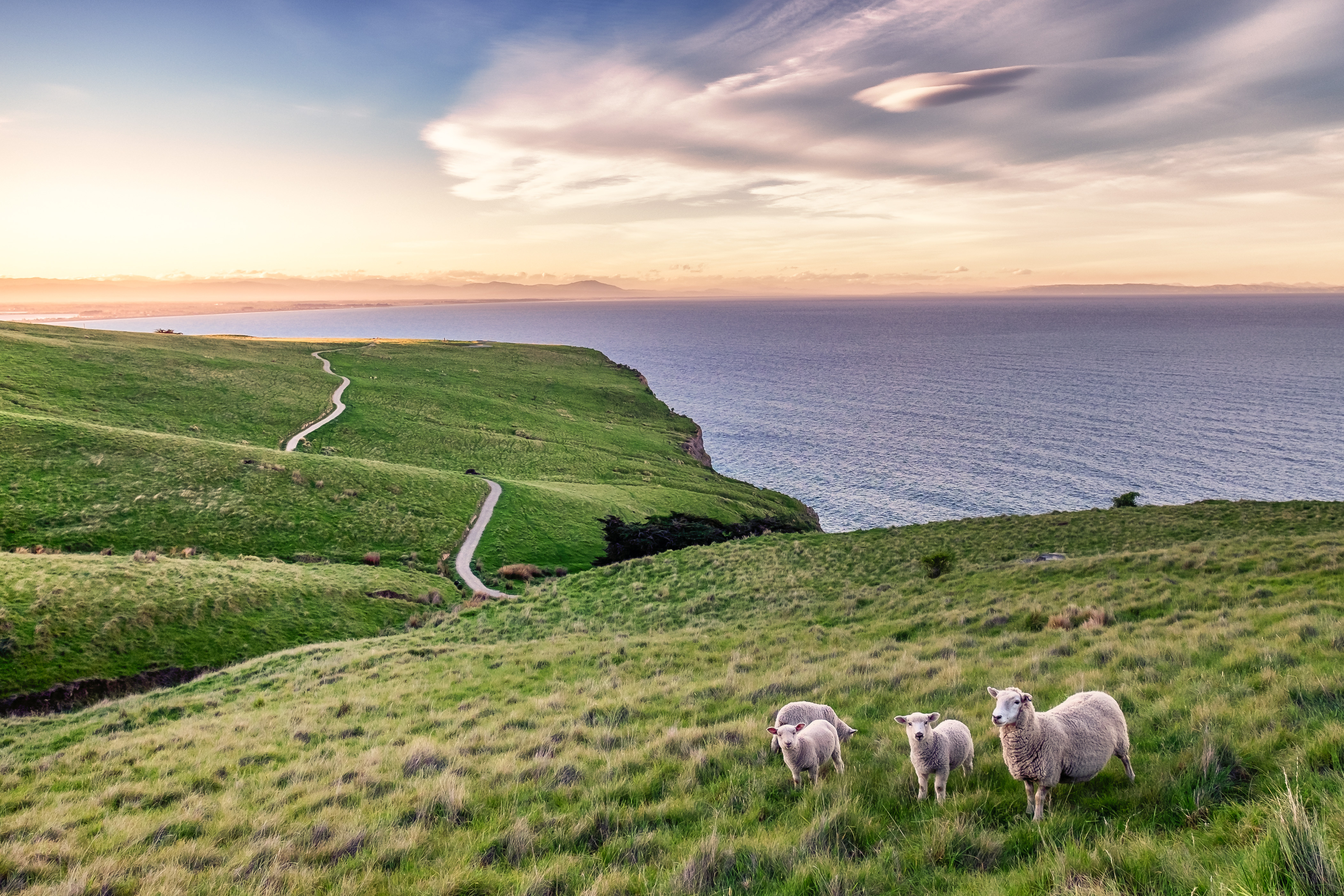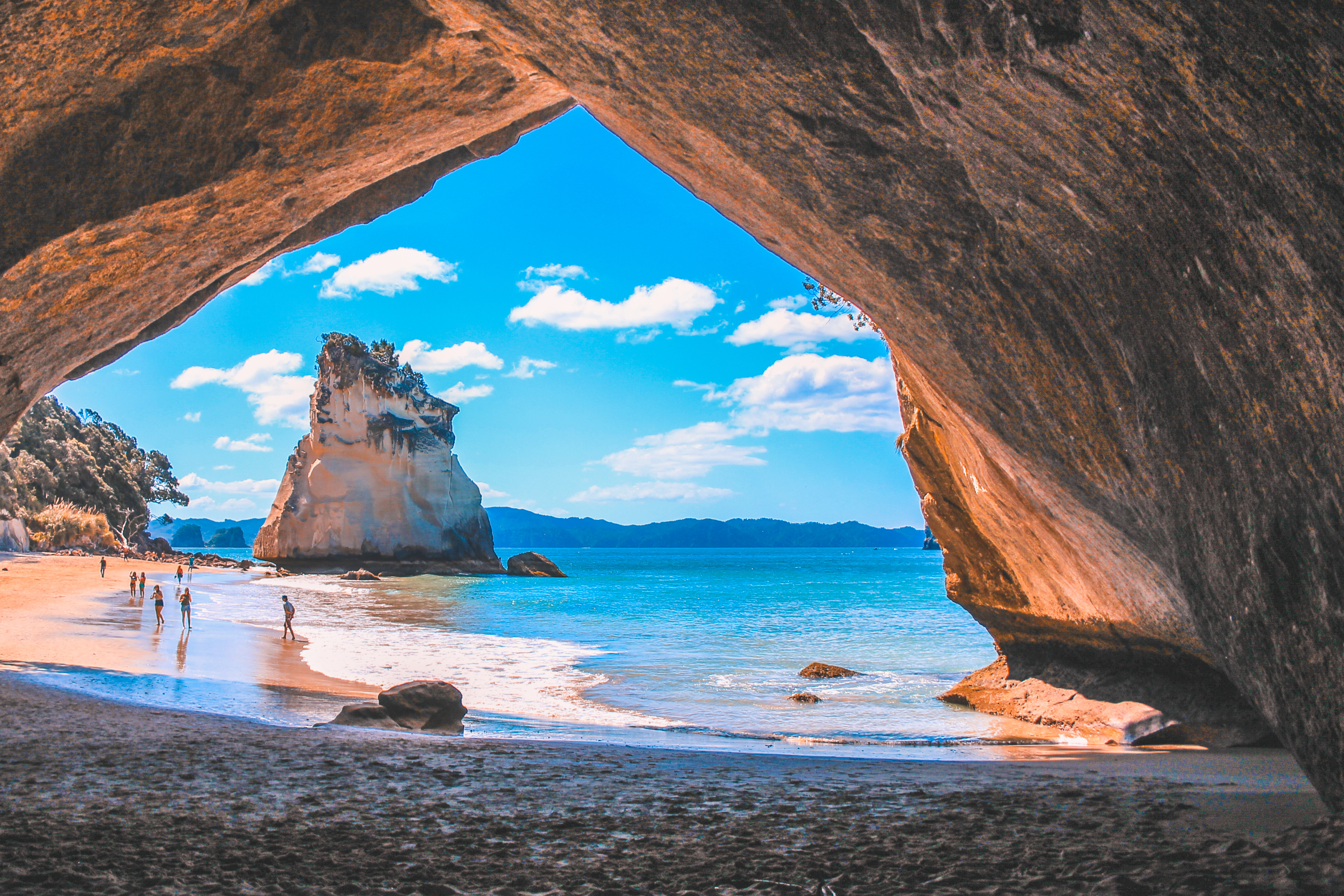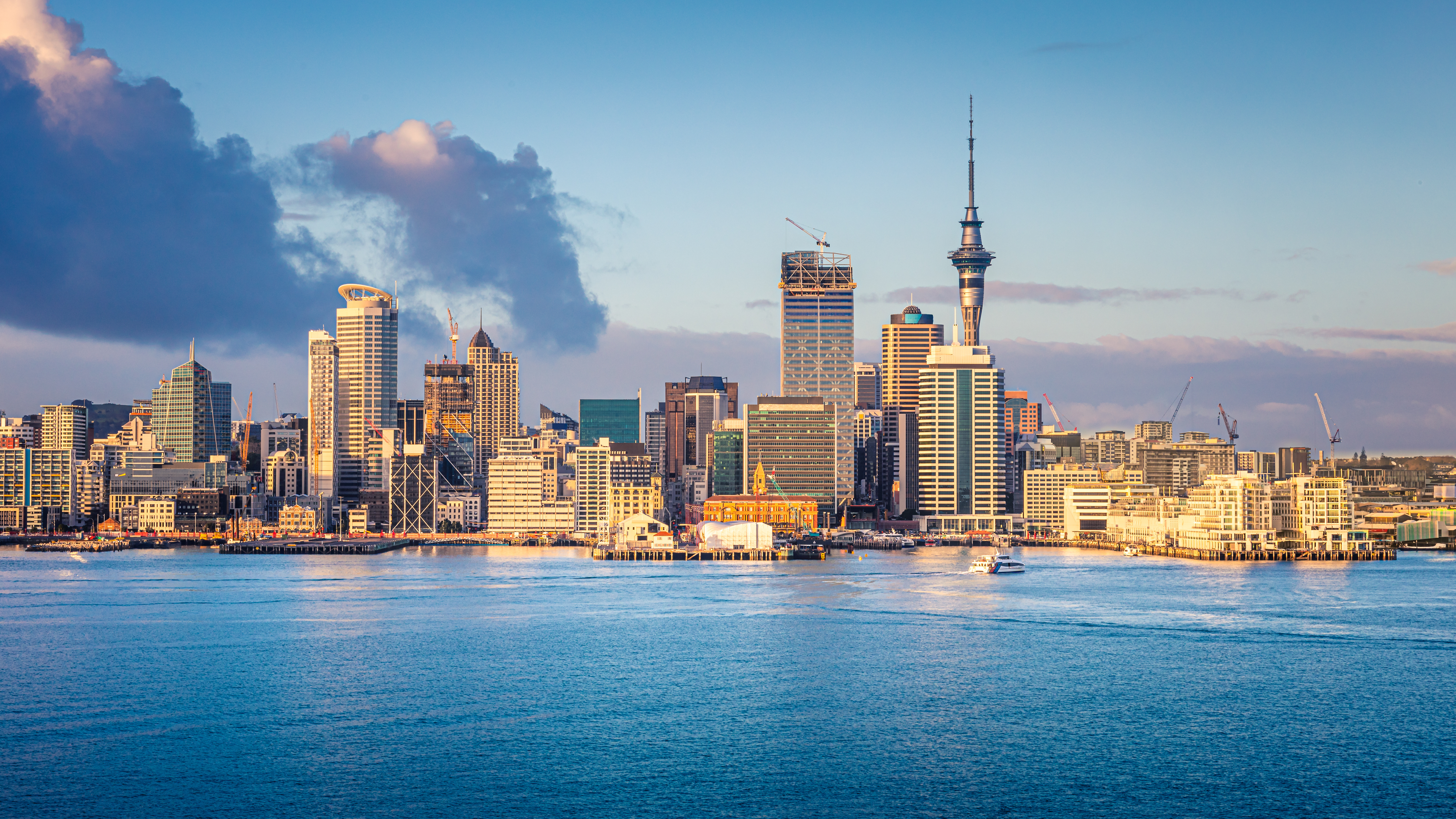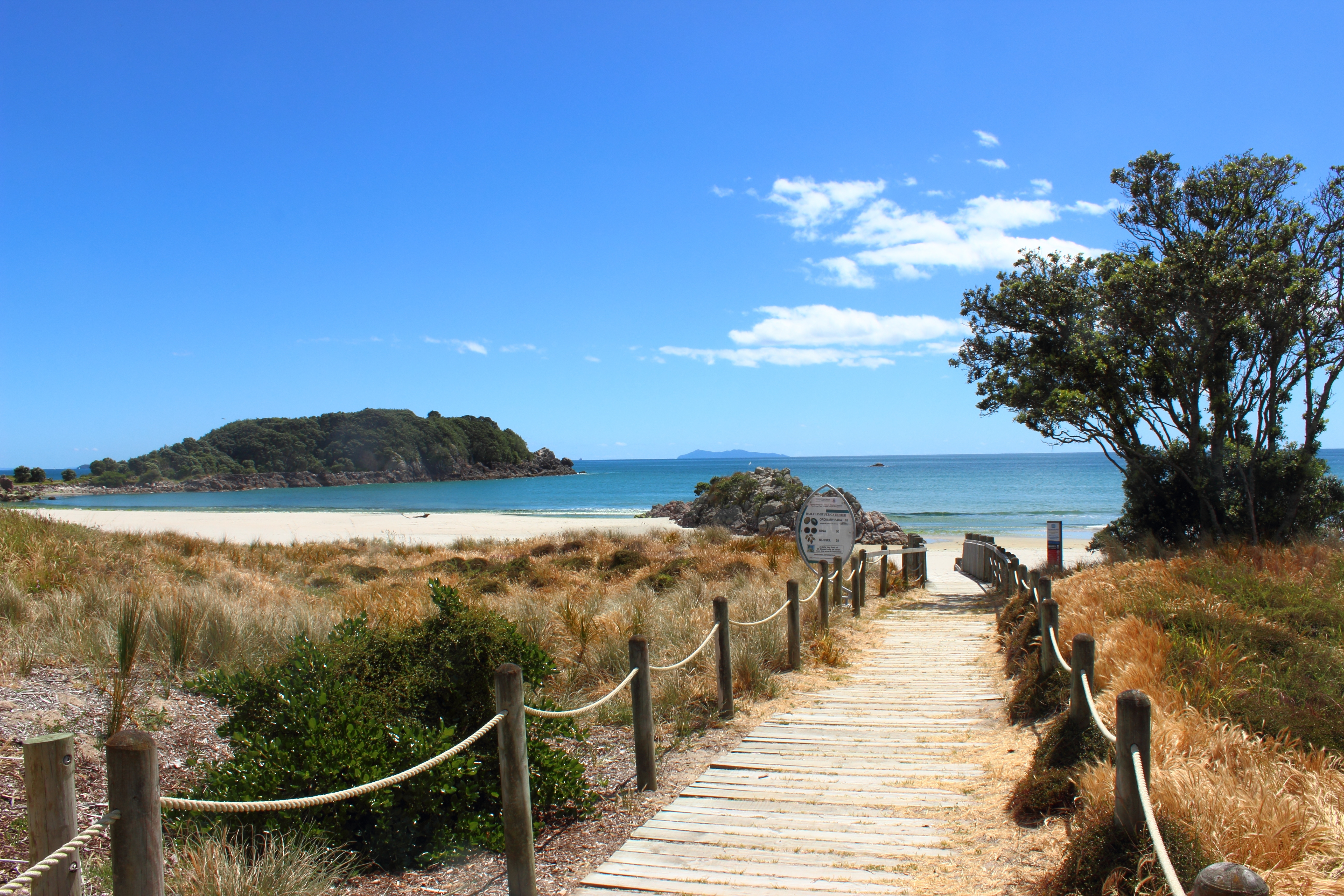How to plan a trip to New Zealand
If you're planning a trip to New Zealand, you're planning the adventure of a lifetime. The country offers such a breathtaking array of experiences that it’s a very real challenge to fit even the highlights into a week-to-10-day vacation.
Fortunately, in New Zealand distance is your friend. The country is like a combination between Alaska and Hawaii – the highest mountains and lushest rainforests. That’s why the Lord of the Rings and Avatar movies were filmed there, and that’s why so many people want to visit.
Geography and geology
Let’s get you thinking about New Zealand by giving you a quick primer on New Zealand's geography.
The first thing to remember is that New Zealand is in the southern part of the Southern Hemisphere. That means the north of the country is warm and the south is cold.
Because New Zealand lies south and west of Australia (the country’s northern tip is at approximately the same longitude as Sydney, Australia), it’s a little less hot and humid even at its northernmost. That makes it a great alternative to Australia for jungle-averse types.
Also, the country consists of two main landmasses – the North Island and the South Island – and a bunch of smaller islands, some of which are volcanic, and others of which are just plain cold.
How cold? The southern tip of New Zealand is closer to the South Pole than Iceland or northern Alaska are to the true North Pole.
The location, the volcanoes, the proximity of the ocean to practically everywhere in the country, and the temperature differences between north and south work together to make New Zealand a land of almost magical contrasts.

Safety
It’s safe, too.
Berkshire Hathaway Travel Protection has named it one of the world’s 10 safest countries for years.
GeoSure Global says its cities are some of the safest in the world, with GeoSafe scores in the mid-80s out of 100. (Just for comparison, an average U.S. city like Dallas scores in the high 60s.)
And the State Department has a level-one (“exercise normal precautions”) rating for New Zealand.
Ratings aside, there are good reasons why you should feel safe traveling anywhere in New Zealand.
Public transportation is reliable and extensive, covering major cities and remote areas. Trains, metros, and buses can get you anywhere you want to go.
Also, English is the predominant language, which makes communication easy for most visitors. People are friendly as well, especially outside of the cities.
When to visit
New Zealand's diverse climate means there's no bad time to visit, though you can experience some temperature extremes throughout the year depending on where you are in the country.
Remembering that seasons are “backwards” from what the United States, here’s what to expect from the various seasons:
- Spring (September-November): Blooming flowers, milder temperatures, and the first cricket matches on the Wellington oval. A perfect time for hiking, exploring gardens, and enjoying outdoor festivals like Auckland’s Garden Festival.
- Summer (December-February): Remember: New Year's Eve takes place in midsummer in New Zealand, and the country lets loose with music festivals like Rhythm and Alps in Wanaka. It’s time to get out and check out sporting events like Wellington’s Rugby Sevens tournament.
- Autumn (March-May): Turning cooler in the south, and in general a great time for sightseeing and wine tasting. The foliage is spectacular in the fiordlands and regions like Central Otago.
- Winter (June-August): Ski New Zealand? You bet! Southern Alps ski resorts in Queenstown and Wanaka offer some of the best skiing and snowboarding in the Southern Hemisphere.

What you need
Unlike many countries, New Zealand requires paperwork for you to enter the country.
You can either apply for a visa or a New Zealand Electronic Travel Authority (NZeTA). Most travelers will find a NZeTA more than sufficient, and New Zealand Immigration recommends you apply for it first. It’s easier to apply for, too.
Regardless of which type of entry document you apply for, you’ll also have to pay a tourist levy. It’s not much – $NZ35 – and you can pay it when you apply for a NZeTA, so don’t be surprised when you’re asked for money as part of the NZeTA application process.
Finally, New Zealand is very picky about agricultural products it allows into the country. If you don’t declare items like honey, fresh fruit, seeds, and plants, you could be fined $NZ400.
Māori culture
One thing you’ll immediately notice about New Zealand is that it takes great pains to respect the culture of the indigenous Māori peoples who were displaced by the British.
Official tourism websites like newzealand.com refer to the country as “Aotearoa New Zealand” and the major cities as “Tāmaki Makaurau Auckland” and “Wellington – Te Whanganui-a-Tara.”
You’ll find similarities between Māori culture and other Polynesian cultures, but it’s best to dive in and see for yourself.
Great places to explore native culture are at:
- The living village of Te Puia, home to the New Zealand Māori Arts and Crafts Institute
- Tāne Mahuta, reputed to be the world’s oldest tree, growing in the Waipoua Forest
- The geothermally heated waters of Ngawha Springs
Many of the top native cultural sites are around Rotorua. You can spend an amazing day in the area visiting Māori sites, exploring the hot springs (by helicopter, if you’re bold) and enjoying a hearty hangi (New Zealand’s version of a luau) at the end of your day.

Cities
When planning your New Zealand itinerary, it’s understandable to want to just pack in as much nature as possible and give the cities a pass. After all, no matter how good the cities are, they’re not quite up to the level of New Zealand’s scenery (which admittedly is top of the top)
If you do decide to explore some cities, you’ll find them to be cool, livable green spaces that reflect the country’s virtues and values. Top urban destinations include:
- Auckland: New Zealand’s largest city, Auckland has a lovely harbor and a diverse food scene. Consider kayaking to Rangitoto Island, going on a whale safari in Hauraki Gulf or jumping off the SkyTower.
- Wellington: The capital city is a vibe, and the vibe is laid-back and welcoming. Take the cable car to the top of the city, tour the mind-blowing FX shop Weta Workshop, grab a bite at the Ortega Fish Shack, and hang out in the city’s many parks.
- Hamilton: If you’re into plants, the Hamilton Gardens are a must-see. Otherwise, the city is all about interacting with nature in fun, accessible ways.
Nature
The main reason people visit New Zealand is for its incredible natural beauty. Here’s what that means.
Fjords (fiords)
If you thought only Norway had fjords, think again.
New Zealand has some of the world’s most spectacular intersections of mountains and waters in the country’s far southwest (the cold areas, if you recall).
Milford Sound and Doubtful Sound are the highlights of Fiordland National Park, but they’re not the only highlights by any means.
The park features rainforests, waterfalls, mountain hikes, lakes, wildlife like sea lions, and perhaps best of all, boat tours of everything.
The temptation is to say that the best way to see Milford and Doubtful Sounds is by boat, but any way you approach Fiordland you’re assured of seeing heart-stopping sights.
Glaciers
As for glaciers, the Haupapa/Tasman Glacier in Aoraki/Mt. Cook National Park is an easy walk to spectacular ice fields and sapphire lakes.
The Fox and Franz Josef glaciers are located in a UNESCO World Heritage site and are almost as accessible as the Haupapa Glacier.
You can walk to the edges of these glaciers, but for a more in-depth exploration, it’s best to hire a guide.
Mountains and volcanic areas
New Zealand literally has Alps – the Southern Alps, which include the aforementioned glaciers as part of their topography.
The Southern Alps are just as steep and craggy as better-known ranges as the European Alps and the Himalayas but they’re more temperate, meaning there's less risk of hypothermia.
That makes these mountains a great training ground for mountaineers looking to scale Mt. Everest and other frigid peaks.
For you, that means easier (but still challenging) hikes through spectacular areas like Hooker Valley and Routeburn.
Some of these hikes can take multiple days, so be sure you’re up for the challenge before you leave.

Beaches
One of the best things about New Zealand is you can go from the Alps to the beach in a matter of hours.
Ninety Mile Beach is drivable, hikeable, and a surfer’s paradise. Hot Water Beach features mineral springs just below its surface. And Ohope Beach is popular with shorebirds and surfers.
New Zealand has more than 9,000 miles of coastline and 25 marine refuges, so you’re never far from some pretty great ocean, no matter where in the country you are.
Lakes and islands
What doesn’t this country have? Hard to say, because it definitely has lakes and islands.
New Zealand’s 775 lakes tend to be of the sapphire-blue glacial variety, which means they’re beautiful and usually ringed by mountains.
Some of the faves include:
- Lake Rotorua, the country’s largest lake, surrounded by geothermal springs
- Lake Onoke, on the southern tip of the North Island
- The Taranaki Lakes, which offer great views of Mt. Taranaki (Taranaki Maunga)
Making sense of it all
That’s so much – how do you decide?
The best way to approach planning a New Zealand vacation is to:
- Break the country apart by its North Island and South Island.
- Put together wish lists for each island.
- Figure out how much time it will take you to do everything on your list (six months is the average).
- Start whittling down.
Plan on driving to all the places on your wish lists. Other transportation modes can get you around, but less conveniently. New Zealand, like Ireland, is best driven around.
If you want to save a little and go where the road takes you, consider renting a compact camper van.
Whatever vehicle you choose, rental cars are plentiful and left-hand driving actually feels quite natural after a spell of awkwardness.

Other tips
Packing
New Zealand weather is changeable, even in midsummer. Pack:
- Layers
- Rain gear
- Comfortable walking shoes
- Hiking boots
For a detailed, downloadable list, check out our post on cruise packing lists and download the “Adventure Cruise” checklist.
Currency
New Zealand uses the New Zealand Dollar.
Credit cards are widely accepted, but it's nice to have some cash for small purchases, especially in rural areas.
Budgeting
New Zealand can be expensive, especially when it comes to food and lodging.
Save money on food by buying breakfast and lunch items at grocery stores or local markets.
Exploring lodging options like these can also save money:
- Camping
- Glamping
- Hostels
- Home and farm stays
- B&Bs
Respect for nature
Leaving no trace is expected in New Zealand. Be respectful of the land, stay on marked trails, and don’t try to sneak native plants back home in your suitcase.
Travel insurance
A trip of a lifetime on the other side of the world – that’s a trip that deserves insurance. Trip coverage from Berkshire Hathaway Travel Protection can help you if you have to cancel or interrupt a New Zealand vacation for a covered reason, or if you have a medical emergency while traveling.
Travel insurance can also reimburse you for lost luggage and some flight issues.
Berkshire Hathaway Travel Protection offers plans to cover every sort of New Zealand vacation and getting a quote is fast and easy.
New Zealand is amazing – there’s no other way to say it. There’s so much to see and do, you may think it’s impossible to fit it all in.
However, a little planning goes a long way in helping you craft the perfect New Zealand vacation. Don’t wait – start today!
Questions About Travel Insurance?
Check out our online guide, "What Is Travel Insurance All About?" We've provided in-depth answers to all your travel insurance questions, starting with the basics.